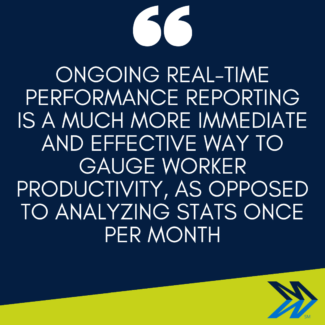April 22, 2021
Over the past year, as COVID-19 forced call center agents to go remote, certain tools proved extremely beneficial in improving productivity. But while all of these tools pre-dated the pandemic, they were never the norm. Now they are. And like remote work itself, they aren’t going away. “The pandemic merely accelerated their use,” says call center expert Kleid Gjataj, a Principal Consultant with Mindsight. Here, are Gjataj’s top picks for applications and tools making a difference in the modern-day contact center.
Today we will take a look at tools that are crucial for your remote contact center to thrive as the future of work changes, not just survive while we are all in pandemic mode.
Softphones
Since many continue to work from home, it would be logistically overwhelming and very costly to ship physical phones to contact center agents. Installing the correct wiring for those types of phones to function properly is another issue. And then if something breaks, you don’t have an on-site IT helpdesk to deal with problems. That’s why softphones, which operate inside your computer browser, are so key. Everything call center workers need to do their jobs effectively are contained in softphone devices, which simultaneously streamlines their jobs and enhances the caller experience. Softphones not only offer decreased costs from licensing and hardware, but they allow users to make and take calls from any device and any location as long as they have an internet connection. What’s more, softphone applications offer video, messaging, contact integration and a host of valuable features that improve team communications. 
Cloud-Based Call Center Software
There’s been a huge shift from premise-based installed applications to web applications that run in the cloud. Whether it’s Cisco or Salesforce, cloud-based programs make everything quicker and easier, from periodic upgrades and patching to technical support when issues arise. Artificial intelligence plays an expanding role as well, using tools like chat bots and interactive voice response (IVR) capabilities to handle routine customer service matters while human agents tackle more complex ones. “In today’s day and age, customers expect immediate answers to all of their questions,” says Gjataj. “Music on hold adds no value to the customer journey; it just adds to the frustration that the customer is already experiencing. Most common questions can be answered immediately by chat bots and virtual assistants – which is why you see adoption of these capabilities increasing.”
Workforce Management Software
At its most basic, workforce management is the process contact centers use to ensure that they have the right people and skill sets available to successfully handle customer interactions in a timely manner and at a minimal cost to the organization. In a traditional call center, you’re frequently at your desk and people can see what you’re doing. Are you making enough calls? Is it time for a break? Are you having trouble with a customer or dealing with a technological glitch? Workforce management (WFM) software remotely keeps workers on track, organized and equipped to repair whatever needs fixing without the need for a human supervisor or in-house IT staff. The common building blocks of WFM capabilities in the contact center include forecasting, scheduling and managing, and when these run like a well-oiled machine, brands are able to deliver a consistent customer experience, improved operational efficiency and better agent job satisfaction and engagement.
 Real-Time Performance Reports
Real-Time Performance Reports
Ongoing real-time performance reporting is a much more immediate and effective way to gauge worker productivity, as opposed to analyzing stats once per month — and only then determining who’s succeeding and who’s lagging behind. This way, agent stats are posted on a constantly updated dashboard, so there’s complete transparency all day long. If someone’s slacking off or performing impressively, everyone knows it. In that regard, there’s an inherent gamification element: agents can compare their own stats to those of teammates and strive to outperform them. And if someone needs help in a certain area, they can get it more immediately rather than getting frustrated and feeling defeated – which then has implications on productivity and agent retention. These tools enable management to spot trends and deal with issues as they occur, and before they become a bigger and more costly problem. They allow leaders to better engage agents, which leads to happier agents.
Augmented Training and Enhanced Technical Support
Having a solid training program and an effective learning management system for your contact centers is key. As mentioned earlier, there is always a lot of turnover in non-remote contact centers. Now that so many people are working from home, you run the risk of that problem worsening if workers don’t have the tools or know-how to remedy issues that keep them from performing their jobs. “I know of one instance where a simple Bluetooth headset breakdown took a worker out of commission for three days,” says Gjataj. In today’s remote-centric environment, where there’s no on-site training or support from colleagues, those types of issues need to be resolved quickly to prevent significant reductions in worker productivity and customer satisfaction.
About Mindsight
Mindsight, a Chicago IT services provider, is an extension of your team. Our culture is built on transparency and trust, and our team is made up of extraordinary people – the kinds of people you would hire. We have one of the largest expert-level engineering teams delivering the full spectrum of IT services and solutions, from cloud to infrastructure, collaboration to contact center. Our customers rely on our thought leadership, responsiveness, and dedication to solving their toughest technology challenges.
Contact us at GoMindsight.com.
About the Expert
Kleid Gjataj is a Principal Consultant at Mindsight, an IT Solutions and Consulting firm located in the Chicago area. With nearly 15 years of experience in both domestic and international consulting, Kleid has helped contact centers of all sizes to bridge the gap between business and technology. His extensive experience with IVR, ACD, screen pop, omnichannel, speech analytics, quality management, outbound dialer, and custom applications is grounded in understanding the critical value of the customer journey. Kleid earned his degree in Network and Communications Management and continues to focus on how contact center optimization helps businesses meet goals, increase efficiencies, and reduce costs.
 Real-Time Performance Reports
Real-Time Performance Reports